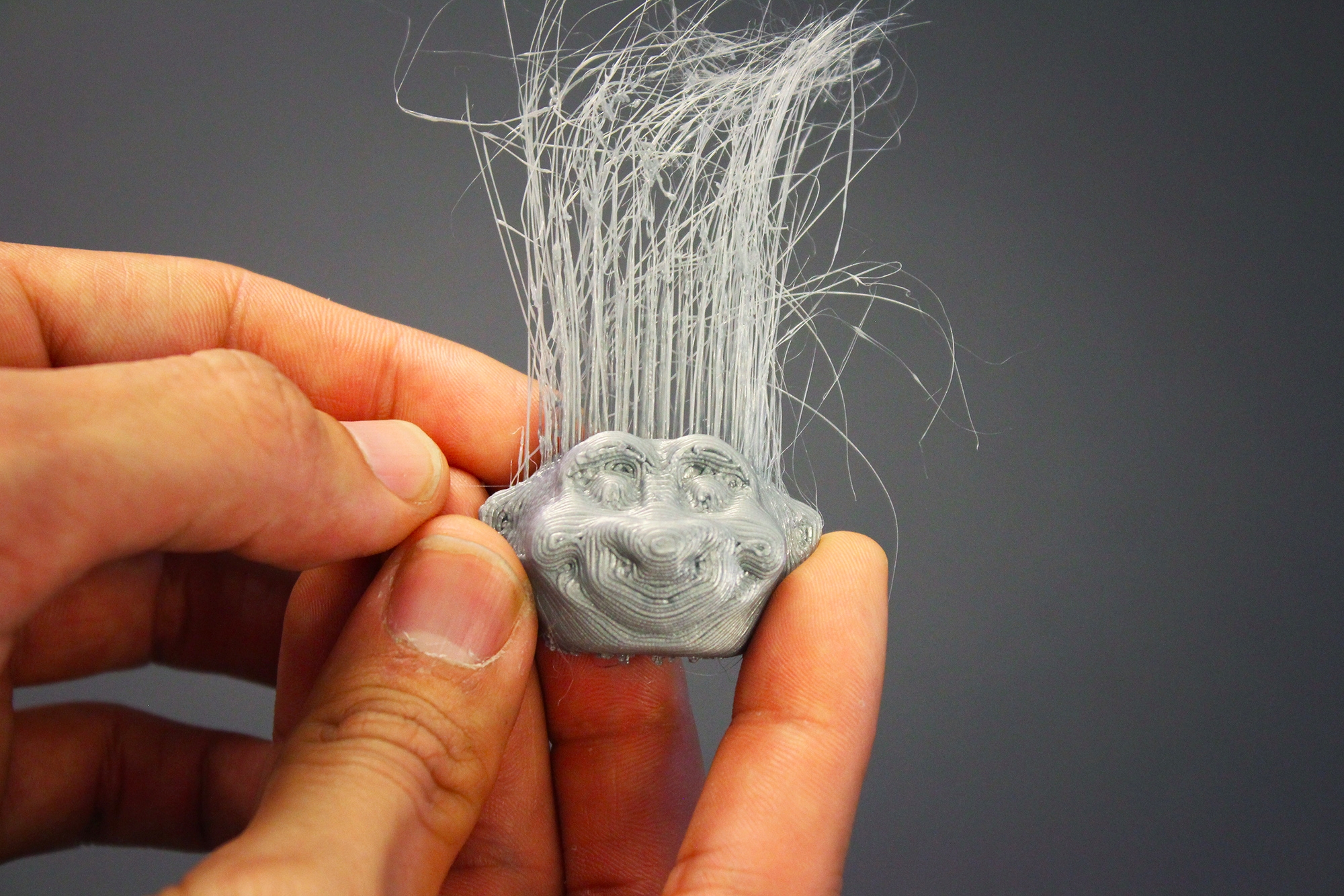Carnegie Mellon Fur-bricates Hair With Inexpensive 3-D Printer Technique Inspired by Strings That Form When Using Glue Gun
Byron SpiceThursday, October 29, 2015Print this page.

3-D printers typically produce hard plastic objects, but researchers at Carnegie Mellon University have found a way to produce hair-like strands, fibers and bristles using a common, low-cost printer.
The technique for producing 3-D-printed hair is similar to — and inspired by — the way that gossamer plastic strands are extruded when a person uses a hot glue gun.
"You just squirt a little bit of material and pull away," said Gierad Laput, a Ph.D. student in Carnegie Mellon's Human-Computer Interaction Institute (HCII). "It's a very simple idea, really."
The plastic hair is produced strand by strand, so the process isn't fast — it takes about 20 to 25 minutes to generate hair on 10 square millimeters. But it requires no special hardware, just a set of parameters that can be added to a 3-D print job. The resulting hair can be cut, curled with hot air or braided. Dense, close-cropped strands can form a brush. (Check out the video below.)
The 3-D printed hair will be displayed publicly for the first time today at the Engadget Live event in Liberty Warehouse in Brooklyn, NY. Laput and his colleagues, fellow HCII Ph.D. student Xiang "Anthony" Chen and HCII Assistant Professor Chris Harrison, will present their method on Wednesday Nov. 11, at UIST 2015, the ACM User Interface Software and Technology Symposium, in Charlotte, N.C.
The researchers developed their technique using a fused deposition modeling (FDM) printer. FDM uses a plastic filament that passes through a heated nozzle. The nozzle extrudes small, flattened strings of molten material into patterns, layer by layer, until the desired 3-D shape is achieved. FDM printers are inexpensive; the one Laput and his colleagues use cost $300.
To create a hair-like strand, the researchers needed to apply just a bit of molten plastic and then pull the nozzle head away rapidly. The problem, Laput said, is that the print head isn't designed to rise quickly and certainly not fast enough to generate tapered strands.
Their solution was to approach the problem from a different angle — literally. Though the print head can't move up rapidly, both it and the print bed that holds the work in progress can move rapidly from side to side. By applying the molten material and then moving the print head and the bed sideways, they found they could create the hair-like strands they wanted.
Laput and his colleagues have used this technique to add hair in a variety of colors to 3-D printed objects — the straight-up shock of hair on a troll head, long whiskers on a Gandalf-like wizard, a tail on a horse. By using randomized root positions, they produced natural-looking hair, while uniform root positions were used to produce toothbrush bristles.
The researchers used a common material, polylactide, or PLA, for their project. Laput said using a more sophisticated material, such as acrylonitrile butadiene styrene (ABS), might make it possible to create hair with magnetic or other properties.
The research was supported by the David and Lucile Packard Foundation, Google, Yahoo! and Qualcomm.
Byron Spice | 412-268-9068 | bspice@cs.cmu.edu
